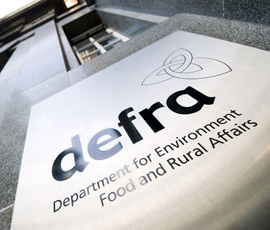Extension sought to badger cull

A badger cull to combat bovine tuberculosis could be extended by three weeks, it has emerged.
Natural England is considering an application to extend the pilot cull in west Somerset by two or three weeks, Farmers Weekly has been told.
A decision on the application is expected later this week.
It comes amid confirmation that fewer badgers than expected were killed in the west Somerset zone by the time the six-week cull ended on Sunday (6 October).
A DEFRA source said: “Early indications suggest that the Somerset cull has been safe, humane and enough badgers have already been killed to help reduce bovine TB.
“Natural England is currently considering an application from the cull company for a short extension of two or three weeks so as to maximise the disease control benefits achieved.”
Some 5000 badgers – equivalent to about 70% of the total badger population – were originally due to be killed during two six-week pilot culls in west Somerset and west Gloucestershire.
So far, however, only 850 badgers have been culled in west Somerset, far fewer than the 2081 badgers originally scheduled to be killed in the zone.
DEFRA believes this is because there were fewer badgers at the start of the cull than initial estimates suggested. It has revised its targets accordingly based on updated estimates.
The department now believes there were initially 1450 badgers in the west Somerset zone. Its updated target means 1020 badgers must be killed – equivalent to 60% of the population.
DEFRA has also revised its badger population figures and target for the west Gloucestershire cull, which is due to be completed in mid-October.
Its revised figures suggest there were initially 2350 badgers in the Gloucestershire zone, meaning 1650 badgers rather than the original target of 2856 must now be killed.
Animal welfare campaigners against the cull are likely to accuse DEFRA of cooking the books to suit its own ends.
But DEFRA believes revisions to badger population estimates based on hair trapping show that numbers of the animals decreased significantly since the last estimates were made.
Badger numbers could vary quite considerably each year due to a number of factors, it has suggested.
These include food availability and the number of breeding females. Last year’s cold winter could also have had an impact on the badger population.
West Somerset badger cull ‘complete’
